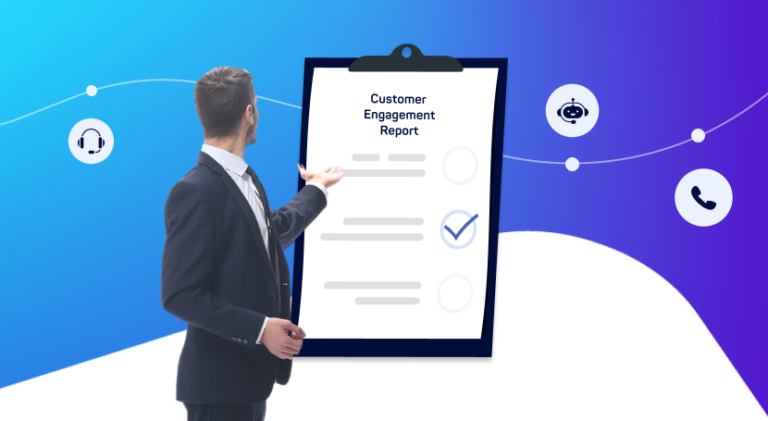We’re ecstatic to announce the launch of the Toku Contact Centre. But how did we get here, and what did we do differently?
You ordered a pizza two hours ago, and it’s nowhere in sight. So, you try calling customer service and what happens?
You are greeted by the sadly familiar (and annoyingly polite), ‘Thank you for your call! All our agents are currently busy; you may continue to hold while we attend to you shortly.’
Your stomach starts to growl in frustration at the contact centre agents’ lack of responsiveness.
The thing is… is it really the agents’ fault?
No! The reality is the agents have their hands (and ears) full as they patiently answer call after call and reply the same questions repeatedly for multiple customers. They’re just as frustrated as you are.
But what if there were a way to make your agents’ lives easier, while increasing their productivity? The secret lies in your Contact Centre platform. With the right Contact Centre as a Service (CCaaS) solution, it is possible to increase productivity for the long term, reduce the burden on your agents, and improve the customer experience.
Here are six must-have capabilities that we think will make the biggest impact.
1. Omnichannel contact centre customer engagement
Gone are the days when contact centre agents engaged with customers only in one channel. New CCaaS platforms offer omnichannel capabilities that allow you to bring all your customers’ preferred channels under the same platform. The goal with omnichannel here on the operations side is to empower agents to address multiple customer conversations all in one platform, simultaneously.
The benefit?
Agents’ Average Response Time – a key call centre agent productivity metric – improves because the average time a customer must wait to interact with an agent reduces. Advanced CCaaS solutions also make life easier for agents with automated response snippets and idle messaging templates – perfect for responding to customers immediately via live chat.
2. Intelligent skills-based routing
Also known as Automatic Call Distribution (ACD), intelligent routing allows you to direct a call/interaction to the agent/s most fit to resolve the task based on the attributes of the call/interaction.
Think about it – customers expect to get their questions answered quickly. And if they’re not connected with the right agent to resolve the issue the first time, that’s a bad customer experience. It can be so bad that it forces them to switch from one channel to another until they finally get the solution they want.
It is frustrating for the customer. And for the business, it can lead to higher operational costs in the contact centre.
With intelligent routing, customer needs are assessed automatically and prioritised. For example, a CCaaS with ACD can automatically push queries in a certain language to qualified agents fluent in the same. This makes life easier for the agents.

Get monthly nuggets of wisdom for all things customer experience in your inbox
Also, when the right agent is matched with the right interaction, you can achieve higher agent efficiency. This means you can expect agents’ First Contact Resolution Rate (FCR) (this measures the percentage of incoming service calls or requests that are resolved during the first interaction with the customer) to improve as well!
3. Contact centre integrations with CRM
If your agents are constantly burdening customers with repetitive questions about their details, that is a frustrating customer experience that needs to be made more seamless.
Having the capability to integrate with your CRM will help in this regard. Agents can access all the necessary customer details in one place, which makes it easier to make contextual, data-driven decisions during any interaction.
Why does CRM integration matter?
It reduces frustration for the customer, who no longer has to repeat their details multiple times to different agents during a call. Also, since all the information is readily accessible in one place, agents don’t have to waste time hunting for them in different business tools on a call. Now they can focus on solving the customer issue, they should also be able to improve their Average Handle Time (AHT) – an important metric that measures the total time an agent is engaged for an incoming interaction.
4. Click-to-call functionality
Click-to-call allows you to make VoIP calls in real-time with just a click of a button. If your contact centre agents conduct hundreds of outbound calls for sales, then manually dialing each prospect’s phone number every single time can become tedious. Click-to-call solves this issue brilliantly. When you hook it up to your CRM, your agents can skip the manual dialing completely with one easy click. There’s no more need to copy, paste, or switch between tabs, which saves time and prevents mistakes as well.
With this feature, your sales agents can call more leads faster, and tailor a more personalised customer experience.
5. Customer call back
A call back option in contact centres is a simple solution that allows customers to hang up instead of waiting around for an agent to answer — without losing their place in the queue. Customers can also choose to be called back by the first available agent, or schedule a callback at a time that suits their convenience.
As call back takes customers out of the hold queue, the queue time – a metric that measures the average time that callers wait in the queue – improves! Also, call back gives your agents more time to fully prepare for the customer they are calling back.
Finally, call back helps reduce the number of irate customers who have been put on hold for long times. This means you’re making your agents’ lives easier by reducing the potential for customers to explode in frustration at them over the phone.
6. Sentiment analysis
Contact centre platforms now come with sentiment analysis functionality that helps agents improve engagement outcomes. With real-time insight into a customer’s feelings, an agent can quickly make adjustments to their communications. It’s about empowering agents to improvise and empathise with customers to handle the query more smoothly and professionally.
This ultimately helps agents to achieve higher customer satisfaction levels with less guesswork, faster.
 Nishant Nandan
Nishant Nandan 

 Girish Dharmaraj
Girish Dharmaraj 
 Beatriz Ruiperez
Beatriz Ruiperez 
 V K Sanjeed
V K Sanjeed